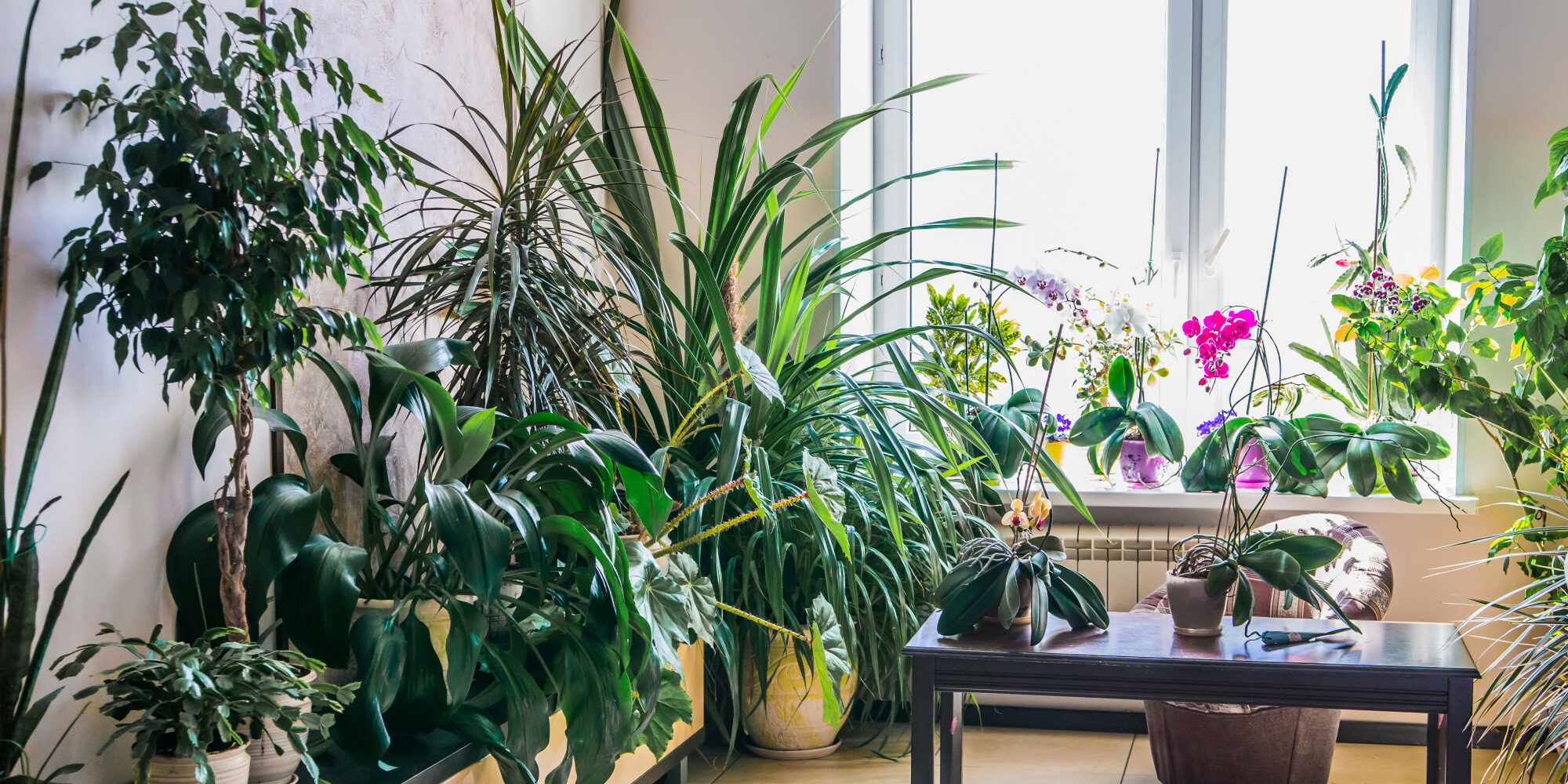Did you know that household pests such as scale, mealybugs, spider mites, and whiteflies can damage and kill your inside plants?
Even though you have the best intentions when it comes to caring for your indoor plants, it is easy to overlook common houseplant issues. This is one of the reasons why it is so easy to kill your plants.
The good news is that it is easier to keep your plants healthy than you might realize.
In this blog post, we’ll uncover the top reasons you may be killing your indoor plants and provide essential tips for restoring them to health. Keep reading if you’d like to find out more.
1. Overwatering Your Plants
Overwatering is one of the most common plant care mistakes that indoor gardeners make. We often believe that more water means healthier plants.
But this couldn’t be further from the truth. In reality, overwatering can lead to root rot, fungal infections, and eventually, the death of your beloved indoor plants.
To prevent overwatering, it’s crucial to understand the specific water requirements of each plant species in your care. Some plants, like succulents and cacti, need very little water.
Others, like ferns and tropical plants, require more frequent hydration. A good rule of thumb is to let the soil dry out slightly between waterings.
You can check the moisture level by sticking your finger an inch or two into the soil. If it feels dry, it’s time to water; if it’s still moist, hold off for another day or two.
Additionally, be sure to use pots with drainage holes to allow excess water to escape, preventing soggy soil and root rot.
If you’ve already overwatered your plants, you may be able to save them. You can do this by repotting them in fresh, well-draining soil and giving them time to recover.
2. Insufficient Light
Like all living organisms, indoor plants need light to grow and thrive. One of the most common plant care mistakes is depriving them of adequate sunlight.
Healthy plants require a delicate balance of light to photosynthesize, but different species have different light requirements.
To ensure your plants receive the right amount of light, research the specific needs of each species and place them accordingly in your home. Some plants, such as snake plants and pothos, can tolerate low light conditions.
Others like fiddle leaf figs and some palms need bright, indirect light. If you don’t have enough natural light in your home, consider investing in a grow light to provide supplemental lighting for your indoor plants.
3. Incorrect Humidity Levels
Humidity plays a significant role in the health of your indoor plants. Many popular indoor plants are native to tropical environments, where humidity levels are high.
If your home’s humidity levels are too low, you may notice your plants’ leaves becoming dry, crispy, or even falling off.
On the other hand, excessive humidity can lead to mold and mildew. This can damage your plants and impact your own health.
To maintain healthy plants and a balanced environment, monitor the humidity levels in your home with a hygrometer. If the air is too dry, you can increase humidity by placing a tray of water near your plants.
If your home is too humid, consider using a dehumidifier. You can also increase airflow around your plants to prevent mold growth.
4. Improper Fertilization
Fertilization is a crucial aspect of plant care. It provides essential nutrients that indoor plants need to grow and flourish.
But over-fertilizing or using the wrong type of fertilizer can lead to unhealthy plants. Signs of over-fertilization include yellowing leaves, weak stems, and slow growth.
To avoid these plant care mistakes, it’s vital to use the correct type and amount of fertilizer for your specific plants. Each plant species has different nutrient requirements.
This is why you should do your research and follow the recommended guidelines for fertilization. Additionally, be cautious not to over-fertilize, as this can do more harm than good.
In general, it’s better to apply fertilizer in smaller, more frequent doses than to overload your plants all at once.
5. Neglecting Pest Control
Pest control is a crucial aspect of maintaining healthy indoor plants. This is because various insects and other critters can wreak havoc on your leafy friends.
Pests like spider mites, aphids, scale insects, and mealybugs can damage plants by sucking sap from their leaves and stems. This will lead to wilting, yellowing, and even death.
Additionally, some pests can spread plant diseases, exacerbating the harm they cause.
Neglecting pest control can result in infestations that are difficult to manage and eradicate. This will ultimately harm your plants’ health and growth.
Regularly inspecting your plants for signs of pests is essential for early detection and prevention. Look for visible insects, webbing, or a sticky substance called honeydew, which many pests excrete.
If you notice pests on your indoor plants, take swift action to control the infestation. Remove the affected leaves or stems and wash the plant with a gentle stream of water.
You should then apply insecticidal soap or a suitable pesticide according to the label directions. Consistent monitoring and timely intervention can save your plants from the damaging effects of pests and keep them thriving.
As long as you take immediate action to get rid of pests when you notice their presence, your plants will stay healthy. This means that you’ll be able to enjoy them in your workplace for many years to come.
Caring for Inside Plants
If you’ve been killing your inside plants, don’t worry. There are several simple things you can start doing to make sure that they stay healthy.
Make sure that you are not overwatering your plants. You should also give them plenty of light and provide them with the right types and amounts of fertilizer. Lastly, get rid of common pests before they become an issue.
If these tips are not working for you, maybe it’s time to call the professionals. We can help you. Don’t hesitate to visit our Indoor Plant Care Services page today!







